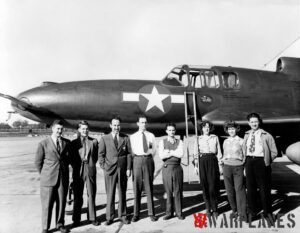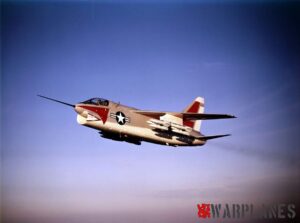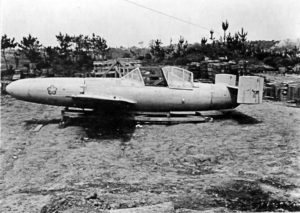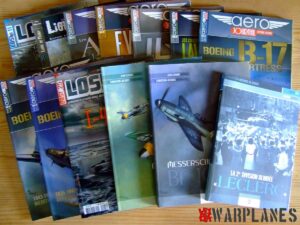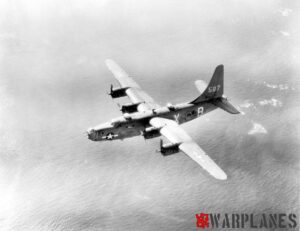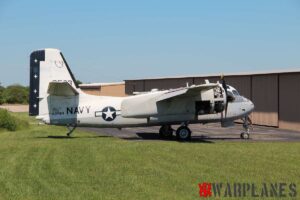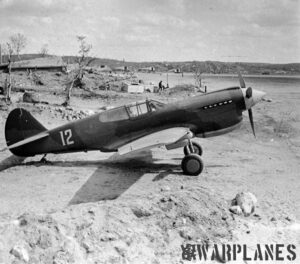Privateer

In the outbreak of the WW2 United States doctrine of anti submarine aerial fighting based on PB (Patrol Bomber) seaplanes and in moment of Pearl Harbor attack, PBY Catalina was their primary airplane in the role. Till then, United States was neutral and they observe with care aerial anti ship and anti submarine fighting of Great Britain. First day of war declaration, Britain lost one vessel due to the German submarine action. Another type dedicated to replace Catalina was Martin Mariner, first flown in 1939 and introduced into service in 1942. Japanese attack on Oahu in December 1941 find there 169 navy aircraft and from those number 87 was completely destroyed. As well majority was Catalinas, that was great shock to US anti submarine defense. Five month after attack, US had some 84 Army and 86 Navy planes, in some 19 bases of Atlantic coast.

Assistance of Army land based planes was of great importance as well Naval planes was not adequate to task. New generation of airplanes were prepared such as Coronado and Mariner but new options were open- Liberator!
Liberator service
British Air Force Coastal Command had proven their lend lease Liberator in anti submarine and ship fights and their capabilities and endurance give best output. With this valuable info, Navy asked authorities to share production of B-24, dedicated to Army, with them. Agreement was made at 7th July 1942, where Navy reduced orders of PBY in reward to B-24. B-24 was redesigned PB4Y-1 and join to them was B-25 Mitchell, redesigned as PBJ for Marine Corps and Lockheed PV-1 Ventura.

First PB4Y-1 were delivered to Navy Transitional Training Squadron in September 1942 and first operational PB4Y-1 Squadron become VP-51 and the Marine photo Squadron VMD-254. Both enter Pacific theater. Navy PB4Y-1 operated in entire Atlantic area with bases on US East Coast, Iceland, England, Brazil, Azores and Ascension Islands. In order to fight vessels transiting from Bay of Biscay from French bases, US established Fleet Air Wing Seven at Portsmouth, England, at 21. August 1943.

Their search equipment present ADSC radar which operated in S band, later upgraded to ASG surface search radar. This radar give ability to detect submarine beyond visual range and with use of cloud manage to get in close range to submarine for attack. But Liberator main drawback was superchargers, giving extra weight and as well they did not operated at high level, some major improvement was on demand.
New design- Privateer is born
In early 1942, after tests in wind tunnels and experiments with single tail YB-24N, Convair concluded that the Liberator will be more sustainable if we abandon the twin vertical in favor of the classic single-fin. Agreement from May 1943 was for three prototypes and Convair was paid 1,85 million dollars. Alongside with prototype orders, Convair received contract for 660 Privateers, worth 108,9 million dollars. In September 1943, Consolidated, combining the requirements of the fleet with his own experience, has created a single-fin version of the Liberator, the designation PB4Y-2 “Privateer”. Interesting that in reports of Convair was stated that 53% of drawings of B-24D are common with PB4Y-2. The nose of the aircraft was extended by 2,13 m to accommodate flight engineers, and the only keel increased the height of the aircraft to 9,21 m (on the prototype XPB4Y-2 tail remained two-keel). There was installed engines without turbochargers Pratt-Whitney R-1830-94 rated 1350 HP at 2800 rpm while typical power was 1100HP at 2500 rpm. The air intakes of the radiator are located on top and bottom of the nacelle, in contrast to the side of the predecessor PB4Y-2 was not one.

On top of fuselage was two Martin turrets, 250CE-16 was front and the 250CE-17 was rear turret, the first was located behind the cabin and the second in front of the vertical tail. In the nose was installed ball turret ERCO 250SH-3, in the tail Motor Products 250CH-6 turret. The flexible gunner of the Liberator were replaced by drop-shaped blisters, inside which were a pair of 12.7 mm machine guns. The design of the turrets allowed to fire both back and forward on the course, as well as vertically down. With this maximum declination of the guns of the fire zone, it was possible to abandon the lower turret. Each turret had 16mm N-4 gun camera.

A distinctive feature of the PB4Y-2 was the presence of a large number of “warts” of the fairings at the bow, covering the antenna of the radar and electronic warfare systems. Radar equipment present APS-2F or APS-2G radar, later replaced with APS-15, capable for surface search as well radar bombing. Privateers were fitted with new navigation equipment AN/APN-4, also known as LORAN (LOng RAnge Navigation). The aircraft was fitted with the most perfect for those times search radar and antisubmarine equipment. The mass of the combat load (bombs, torpedoes, sea mines droppable tanks or depth charges) was 3,628 kg. Rear bomb bay could also be fit with various reconnaissance camera.

Apart from this, crew was also equipped with burning stove, water tanks, toilet as well various tool box.
Last produced Privateer was BuNo 66324 and it was 740th built sample. Sample machine BuNo 66325 was on assembly line, it was used for some test and was later scraped on assembly line, never delivered. Last sample was send to Lichfield Park for mounting of armament but Japanese surrender result to be send to storage, alongside with other brand new machines.
Into action
In June 1944, HEDRON-14 receive first PB4Y-2 for training and two months later, in August 1944, VPB-118 and VPB-119 become first operational Privateer units. VPB-118 Old Crows become first to be engaged in combat. Deliveries of Privateers to the Fleet began in March 1944 and ended in October 1945. Conver San Diego produced a total of 739 PB4Y-2s. The last in March was transferred to the base of Clark field (Philippines), where the crews bombed the Japanese-occupied part of China until the end of the war. In April, VPB-118 relocated to Okinawa. Privateer aircraft were re-equipped with the VPB-106 squadron, once the first to receive PB4Y-1 aircraft, and it was sent to the Pacific Ocean for the second time in the war. Until the end of the war, eight new squadrons were formed with Privateer.

Privateer was able to carry two 726-kg Bat planning bombs on underwing pylons. For example, a pair of such bombs were dropped by Privateer from VPB-109 on Japanese ships in the Harbor of Balik-Papan (Borneo island). Before the war the equipment in the media Bat were the 123rd and 124th squadron.

The last of the 740 built Privateer delivered after October 1945. Unlike bombers in-24 marine Privateer remained in service after the war (since 1952, the aircraft was designated P4Y-2). There were several post-war modifications, including the P4Y-2S with an upgraded search radar, P4Y-2P, weather scout p4y-2M (with the nose of the fuselage type B-24D, fairing under the nose of the fuselage and without defensive weapons), P4Y-2G for the Coast guard (unarmed, significantly modified). Specialized aircraft radio intelligence on the basis of Privateer in the postwar years, the US Navy was used along with aircraft of similar purpose Martin P4M Mercator.

One PB4Y-2 from the VP-26 squadron was shot down over the Baltic sea on April 8, 1950 near the Soviet base of the Libava Navy by a La-11 fighter (according to other data MiG-15); all 10 crew members were killed. An unknown number of similarly equipped aircraft used since may 1951, the troops of the Kuomintang, one of them was shot down by a fighter Sea Fury Burma air force.

Us Navy Privateer aircraft took part in the Korean war. Thus, the squadron VP-772 was involved in the discharge of lighting bombs to illuminate targets to attack aircraft of the USMC on the night of June 12, 1951. P4Y-2S other squadrons patrolled the coastal waters. VP-9 was the last squadron during the Korean War to fly the Privateer.
Bat bomber
Privateer version PB4Y-2B was additionally equipped with rack and telemetry equipment for launching of SWOD Mk. ) Bat gliding bomb. One of each were mounted on the wing, outside of engines 1 and 4. Each Bat contain 454 kg bomb and in nose was installed Western Electric SWOD Mk. 2, S band radar. Its radar was correlated with Privateer search radar, to assist aiming. Once the target was selected, Bat radar locked on target and it was released from 15 miles distance (most accurate proven 12 to 13 miles). During the WW2, patrol squadrons VP-109, VP-123 and VP-124 used Bat bombs against the enemy.

Many claims were made by using Bat and entire book can be made with this subject so I will mention here just some of them, made by crew from VP-109. They was in combat for a 61 day, sunk 118 ships, 86 damaged, shot 6 aircrafts, two destroyed on ground, 8 damaged and additional 46 strikes against shore targets. Crew no 1, CMDR Georg Hicks, flew Privateer BuNo 59528 named ‘Larnbaster’ and they sunk 13 ships, damaged 5 ships (one of them destroyer). They also destroy one railroad bridge and other facilities in Korea (31 July 1945). Crew no 8, LT Joseph Jobe, Privateer name ‘Consolidated’s Mistake II’, sunk 27,5 ships, 16 ships damaged and one aircraft destroyed on ground. Crew No 4, lead by LT Clifton Davis had sunk 13 ships and 8 ships damaged.
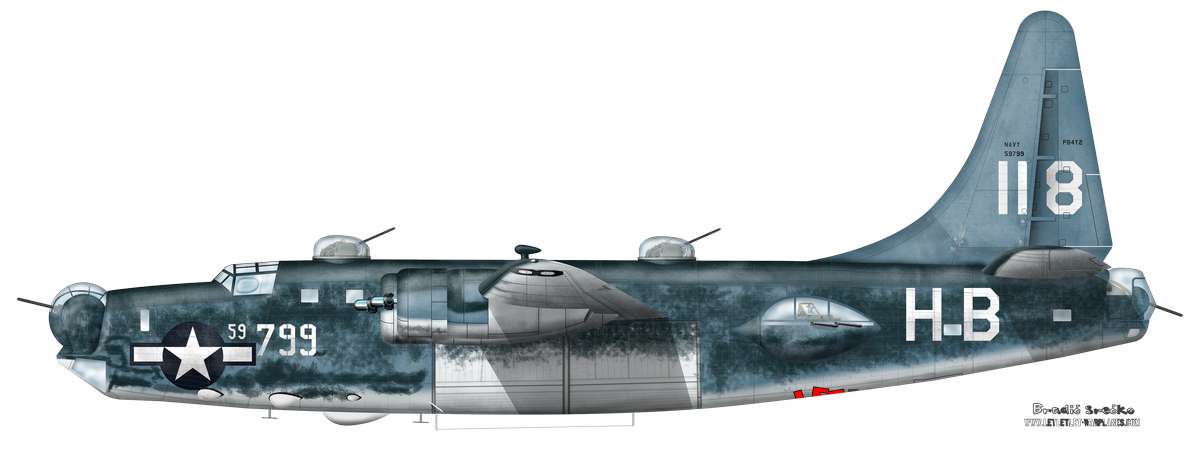
Bat stayed in service until the 1953, when it was withdrawn. Last use of Bat was during the deployment of VP-24 to Argentina, from December 1953 to May 1954. Bat was find to sensitive to electronic countermeasure and was replaced by next generation of the weapon and the same Privateer was replaced by Neptun in patrol bomber role.
Drones
Surplus of Privateers were used for various armament testings such as Bullpup, Redeye, Sidewinder, Sparow, Talos and Terrier. Private drone conversion were done in San Diego and conversion include strip all armament, armor plates, pilot equipment, radar equipment, fuel tank from bomb bay and most of radio equipment. Some radio equipment was keep for the pilots who flew Privateers from base to base. This version had designation PB4Y-2K and after the post war designation changes becomes P4Y-2K and QP-4. In the aircraft was installed P-1K autopilot, connected with flying controls. Camera was installed in wing tip pods to record hit of the missile. Total of 23 drone Privateer were launched and last one to be destroyed in such mission was BuNo 59896. Remained drones were stored.
Weather reconnaissance
For the purpose of monitor weather conditions were developed Privateer version PB4Y-2M. Hurricanes and typhoons did many problems to the military operations and as well storm behavior was not known, weather squadrons with privateer were deployed. VPB-108 start for the first time such a operation on Iwo Jima, 15th August 1945. And in following three months they encountered 14 typhoons and winds of some 150 km/h. Engine was some modified, some plates were removed to increase air flow thought engine cylinders. Soon, two more squadrons joined, VPW-1 and VPW-2. Conversion into specific version was made at Corpus Christi, Texas and 28 aircraft were delivered early 1946. Modification include removing of the defense turrets and the nose was cover with greenhouse version from B-24D. Entire electronic countermeasure systems were removed and installed new. Among the specific equipment was R88-1-170 air position indicator, VG-TA recording accelerometer, barograph, emergency VHF transmitter, AN/ANQ-1A wire recorder. Weather reconnaissance include flying into the storm and penetrating them. PB4Y-2M was later used in nuclear test program Crossroads and Wigwam.

Some nice memories of people who flew this mission:
Seven Privateers were based at Master Field in Miami, FL in the late 40s. They constituted the hurricane hunters and as I remember it was VP24 or VPHL1(not sure). The squadron would fly weather in the hurricane season; then fly weather in the artic circle out of Argentia, Newfoundland, and BW-6 northern Greenland, during the winter months. In the spring, they return to Miami and then fly out of Gitmo for the spring manuvers in the Carribean. Planes were restressed several times and finally in the early 50 replaced by the P2V Neptune. The film “Slatterly’s Hurricane” was filmed at Master Field and utilized the squadron’s equipment.
Wesley Owens memories:
I was Plane Captain on the Privatier VJ1/VW3 Nas Guam. WE flew weather out of NAS Guam ( 1952-1954) This was a very strong and reliable ole bird. We penatrated typhoons with winds up to 150mpr., altitudes of 100 to 1500 hundred ft.it was one real bad ride. On 16 Dec. 1953 one of our aircraft went down in typhoon Doris we never found a trace of it
Privateer with speakers
During the war, US Navy used Lockheed Ventura equipped with speakers to broadcast to enemy troops on ground (similar as Soviet did with Po-2 at night against German troops). This version nicknamed Polly. Three samples of Privateer were converted for such missions. Bell Telephone Labs were assigned to develop system for this airplanes. Very first Polly was BuNo 59810, delivered 2 June 1945. Entire project had high priority. In the rear fuselage were installed AN/AIA-4 amplifier and plane get designation PB4Y-2N.The first Polly Privateer arrived at Guam at 10th September 1945 and other two five days later. They have retained their defense turrets. They flew among the islands and announce end of the war. Later top turrets were removed. Additional test were conducted in 1952 and end in 1953 and there was ni further development.

PB4Y-2S for antisubmarine operations
This version were developed in Naval Aircraft Factory in Philadelphia when sample machine BuNo 59857 were converted into this role. This conversion include searchlight L-11 mounted under the starboard wing (similar as British PB4Y-1), R-156/ARR-16B Sonobouy Radio receiver, LD-151/ARR-16B magnetic bearing indicator and Model 20N wire recorder for tracking underwater contacts. Bomb bay was modified to carry one Mk-24 Mine (homing torpedo) in each of the forward bays and 26 AN/CRT-1B sonobouys or 40 AN/CRT-1B sonobouys in four bays or four 650 pounds deep charges. Additional 12 spare sonobouys were carried near right waist turret. Crew in this version had 12 man.
Others use
Privateer were used is several versions and it also served as testbed for various equipment. During the 1951, US Navy redesigned and it become P4Y-2. The Naval Air Test center at Patuxent River were most important place to test Privateer capabilities and testings were made in five divisions- Flight Test (FT), Tactical Test (TT), Service Test (ST), Electronics Test (ET) and Armament Test (AT). They received machines from San Diego plants for testings. For the training was dedicated Flight Test Pilot’s Training Program (TPT), which start class at 12 March 1945 and among the other planes, there was also PB4Y-2. Original Brewster production plant in Johnsville was terminated and there was established in 1944 Naval Aviation Modification Unit (NAMU), and Privateer was developed there to carry Bat radar guided bomb. After the center was relocated to NAAS Chincoteague, NADC Johnsville continue use PB4Y-2 (till the fifties).

Naval Aviation Ordnance Zest Station (NAOTS), at Chincoteague start work at 15th March 1943 and there was developed armament as well used for live test, Privateer was tested there with live launch of Bat radar bomb. Naval Air Missile Test center (NAMTC) at Point Mugu received its Privateer after the WW2 and they were used as target for testing missiles. Naval Ordnance Test Station (NOTS) Inyokern, China Lake, California, was site where was researched, developed and tested guided missiles, aircraft weapon delivery systems, aircraft rockets and rocket launchers, fire control systems and underwater ordnance. It is known that eight Privateers were used there.

Many Privateers were transferred to serve in Air Reserve units as well in Coast Guard. USCG start using privateers at the ending months of the WW2 and their aim was to assist in constitution of long range navigation station throughout the Pacific. All turrets were removed and over original camouflage was placed U.S. Coast Guard letters. Additional machines were transferred to USCG in 1947. From 1952 to 1958 Coast Guard operated seven Privateers, redesigned as P4Y-2G. Their task was to intercept commercial and military aircrafts over water as well standard search and rescue mission. In the San Diego plan they was specially modified to serve this task. Four Privateers were put on auction in July 1958 and they was sold to new operator and seen new role as fire bombers.

Privateer was not popular as movie star as other airplanes and it was used in two movies. In the 1948 it featured in movie ‘Slattery’s Hurricane’ and it is Privateer showcased as hurricane hunter, what was one of its real role. Movie was released in August 1949 and it had positive review. One romantic comedy was made in 1958, ‘The Lady Takes a Flyer’ with amazing looking Lana Turner.

Some 33 Privateers were used as source of spare engines by the end of the end of 1957 and early 1958 and their powerful engines were used to re engine DC-3 and C-47.
Foreigners
United States try to keep influence of Soviet Union behind Iron Curtain and in this way, they support all forces who was ready to fight against them. As part of the Mutual Defense Assistance Program, United States send to France in October 1950, 44 Grumman F6F Hellcat ( as replacement for Spitfires), next year France received 90 Grumman Bearcat (Total of 209 from 1950 to 1955) and 24 Douglas Invaders. As replacement for Catalina, France received in 1950, 24 Privateers. They was deployed to three units, Flotille 24F, and 8F/28F (8F and 28F is the same unit). Operations started within Flotille 8 in November 1950, in French Indochina, based in Tan Son Nhut.

With arrival of additional machines, new base for Privateer become operational, Cat Bi and Tourane (or Da Nang). French have version PB4Y-2S and they were operational in patrol over Gulf of Tolkin, with convoy escort and search and rescue missions. Privateers was often requested to support troops who fight inland so they did numerous of bombing missions. For this purpose, French technicians converted into B version, with Norden bomb sight and re-configuring other equipment. But opposition have strong anti aircraft artillery so two machines were lost in Dien Bien Phu area. As the combat raging, United States deliver additional machines. After fall of Dien Bien Phu, French replaced their PB4Y-2 with new aircraft’s.

In June 1956, remaining 12 airplanes, French were detached to Mediterranean. They operated alongside with Neptuns and Lancasters and was engaged in missions during revolution in Algeria, in 1956. They perform reconnaissance, patrol and bombing missions. Civil war continued and Privateer become obsolete and was finally removed from French service in 1961.

As support to National China, United States established on 1st May 1951 American Military Assistance Advisory Group on Formosa and 38 Privateers were delivered to Formosa. First two airplanes was ex VP-28 machines and they was delivered at 14 April 1953. They were used as harassment missions and drop agents on China main land. Maritime patrol was also standard and one machine were converted to perform electronic surveillance missions. Two machines were lost in mission, first one in 12 September 1954 during bomb mission on coast city Xiamen. Starting from February 1960, National China Privateers dropped more then 1000 guerilla fighters on border between Thailand and Burma. To support this, there was build airstrip where PB4Y-2 could land after deliver cargo. Burans end this covert mission in February 1961 when they send Sea Fury and soon later, Privateers were intercepted and one was shoot down but fire from another one perished Sea Fury who crashed. After this incident, Nationalist China left with single Privateer and it was scraped late in 1961.

So many Privateers was available in surplus and beginning 1958 was flurry of Privateers export to South American countries. Privateers service were operated between Chile, Paraguay and Argentina but only one was know as registered. Privateer who was used in ELDA (Empresa Latino Americana de Aeronavagaceon from Chile), flew lines inside Chile as well to Lima in Peru, also Guayaqull in Ecuador; San Carlos de Bariloche, Comodoro Rivadavia and Mendosa in Argentina.

Honduras has acquired one PB4Y-2S in December 1956 (BuNo 59792) and was delivered to Tegucigalpa. With new serial FAH792, it served it Honduras air forces and soon was converted into freighter. Another Privateer was also delivered to Honduras and it is likely leased. This sample was striped of all military equipment and served as cargo. Both Privateers was out of Honduras service by 1965.

Sample machine registered as XD-DIT operated in Mexico, the same machine was named Moby Dick and was operated coastal places Mazatlan, Sinaloa, Torreon and Coahuila. This plane was eventually scraped in Mexico City in 1965. Sole machine was used in Peru, as cargo, operator was Agro Aerea S.A. and it was short living service, aircraft being scraped in the mid of 1960.
Civil service
Company Hawkins & Powers Aviation Inc. from Greybull, Wyoming, operated the last PB4Y-2-five aircraft “Super Privateer”, equipped with motors R-2600, removed from the B-25 Mitchell. The engines had turbochargers that significantly improved the flight data of “fire-fighting bombers”. The payload weight of Super Privateer was 8981 kg or 8328 l inhibitor. After the fatigue damage to the structure in 2002, the plane crashed N7620C, the flights of other machines stopped, and soon they were sold.
Technical data
Variants
PB4Y-2 main production version of the patrol aircraft.
PB4Y-2B carrier guided bombs (ASM N-2 “Bet”).
PB4Y-2G aircraft of the Coast guard.
PB4Y-2M weather scout.
PB4Y-2S aircraft C upgraded search radar.
PB4Y-2P photo reconnaissance.

Data:
Modification of PB4Y-2
Wing span, m 33.53
Length, m 24.98
Height, m 9.17
Wing area, 97.36m2
Weight, kg
empty aircraft 17003 kg
maximum take off 29483 kg
Engine type 4 PD Pratt Whitney R-1830-94 Twin Wasp
Power, HP 4 x 1350
Maximum speed, 395 km / h
Cruising speed, 225 km / h
Practical range, 4800 km
Practical ceiling, 6310 m
Crew 11
Armament: twelve 12.7 mm M2 machine guns
Bomb load-5806 kg
Conclusion
We aviation enthusiast do like to talk about airplanes and compare then and trying to find which one is best. Method and approach is various as well preferences. My own opinion is that Privateer is without doubt best bomber of the WW2. It have outstanding performances and most sophisticated equipment. Patrol over Ocean is not easy thing, Ocean is not forgiving! Flying alone hundreds kilometers away from base, over wide Ocean and if anything happen, no one can help you. If you are lost, you are completely lost. No one will know what happen and crew member will never get home, never have grave. This make Privateer and man aboard it so special.
Srećko Bradić
All photos are Rich Dahn collection, unless state different
















